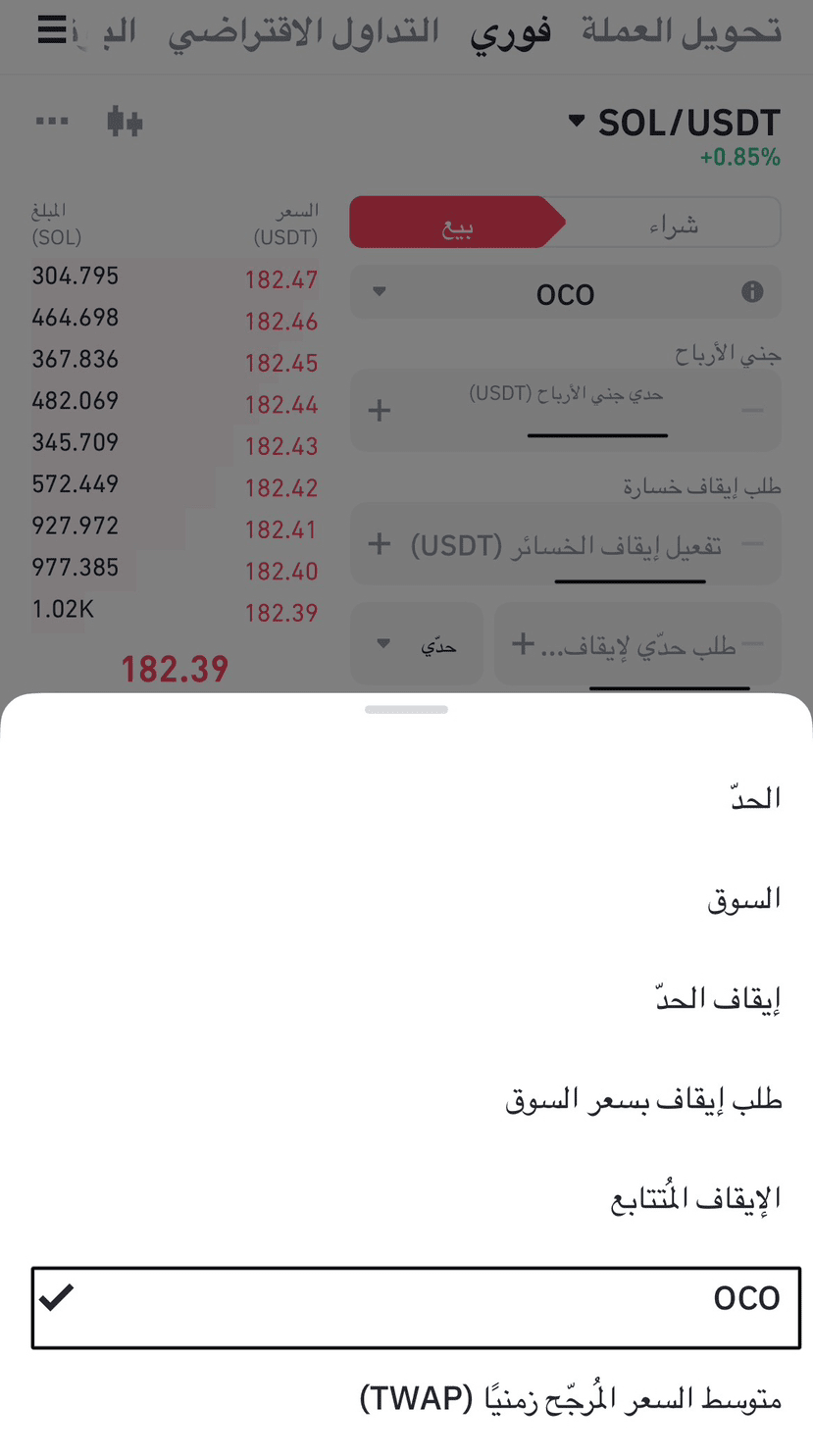Many people enter spot trading in the same pattern: they open a trade, the currency drops a bit, they sell it quickly at a loss while feeling anxious. And when they open a profitable trade, they leave it open without a plan, so the currency returns to the entry point or even lower, and they sell it at a loss.
This method slowly destroys capital over time, causing losses to accumulate deal after deal, and in the end, the trader discovers that their balance is evaporating and they haven't learned anything from the market.
Today I will teach you two essential steps:
Division
Using an order that prevents emotion and secures your trade (OCO)
These two steps are enough to develop a mathematical mindset in trading, helping you over time to design your own strategy away from randomness.
1- The idea of division
Let's assume you have a capital of $180, and you have a recommendation on the SOL currency as follows:
Entry: 180
Target: 190
Stop Loss: 160
What does the beginner do?
They enter with the full $180 at the entry price, and if the currency drops to $178, they sell at a loss. They repeat the same mistake with a second and third currency until they lose all their capital without understanding the market.
But a trader with a calculated mindset thinks differently:
They say: the market is volatile and will not move in a straight line. Sometimes it goes up and sometimes down.
So they only invest $90 at 180, leaving the second half ($90) as a reinforcement in case the currency drops by 5%, meaning at $171.
Buying $90 at 180 = 0.5 SOL
Reinforcement $90 at 171 = 0.526 SOL
Total = 1.026 SOL
Calculates the average:
180 + 171 / 2 → the average comes out to about $175.
What did they gain? Their average entry was lower, thus their chance of profit is greater. Instead of needing the currency to rise to 180 to recover their capital, it is enough for it to reach $175 to exit without loss.
2- OCO order (One Cancels the Other)
After adjusting the average price, the second and most important step comes: securing the trade.
This happens through an OCO order (its name varies from device to device; mine is called OCO).
How does it work?
They place a sell order at the target of $190 (taking profit).
And activate the stop loss order at $175 (to exit without loss if the currency returns).
When setting a stop-limit order, you write 174.9; the condition is activated for the entire amount, and the order is executed automatically, thus securing the trade.
Result:
If the price rises and reaches $190 → their profit is $15 (about 8.5%).
If the price drops to $175 → exit without loss.

Summary
The idea is simple:
Do not enter all your capital at once.
Divide your entry to reinforce wisely.
Use automated orders like OCO to protect yourself from emotion.
In this way, you can maintain your capital and learn step by step how to think with a mathematical mindset that distances you from randomness and brings you closer to building a strong strategy of your own.
